
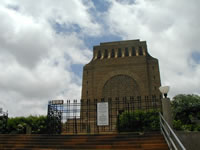
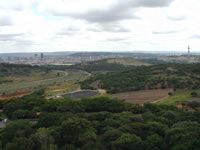
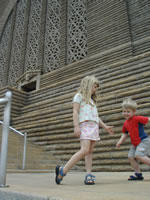
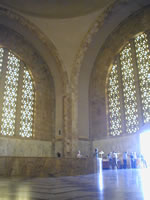
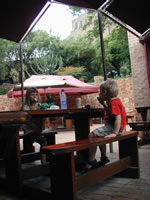
Between the Hotel 224 and the Voortrekker Monument, we had some interesting experiences with Afrikaner culture. I was amazed by the defensive nature of the Voortrekker Monument. Not only does it look like like a bunker, it is surrounded by the laager wall - a symbolic wagon circle in the form of a 10-foot-high concrete wall (photo). The symbolism of the laager wall is clear: it protects the monument. The defensive quality and the sense of besiegement of this place is quite astounding, considering that this monument belongs to a people who considered themselves the masters of the land at the time.
But the Voortrekker Monument is also an expression of the general defensiveness that appears to permeate Afrikaner culture. The voortrekkers circled the wagons, and many Afrikaners today still live with a laager mentality. This sense of besiegement was the breeding ground for apartheid. During the apartheid era, the white South African elite exploited this sense of besiegement among the Afrikaner population for their own economic benefit of keeping a captive, cheap labor pool of black workers. Today, this engrained laager mentality appears to be the single greatest obstacle for many Afrikaners, to be able to move on and embrace the new South Africa.
That is not to say that there are not already many progressive Afrikaner people, who are eager to work side by side with all other South Africans to turn their beautiful country into a nation built on mutual respect, fairness and equality.
More resources: